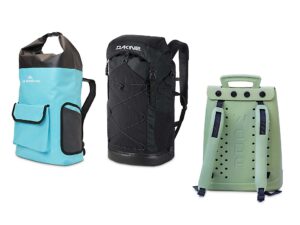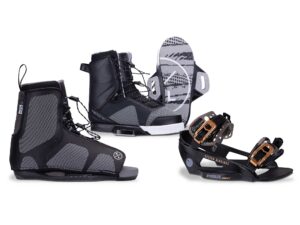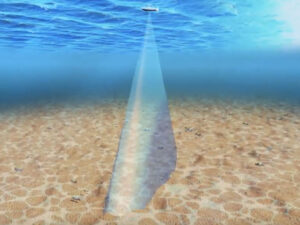Lightning will always take the most direct conductive path to earth by striking the highest object in the area. Unfortunately, on the water, the highest and most attractive object to a lightning bolt just might be your boat. Be advised that when lightning strikes your boat or even near your boat, your electronics are vulnerable to damage. Here’s how to be prepared.
Create a Short Circuit
There is no absolute protection against lightning aboard a boat. But there are steps you can take to avoid or minimize damage. The most likely targets are antennas, fishing rods, towers, T-tops or any elevated electrically conductive surface. You can’t prevent a lightning strike, but you can create a safe path for lightning to travel.
To conduct a strike safely to “ground” (on a boat this means to the water), create a low-resistance path from the highest point on your boat to a metal grounding plate in contact with the water. Start with a solid half-inch-diameter steel or bronze rod elevated six to 12 inches above every other object on the boat. The tip of that rod should be pointed, not blunt. Run a conductor made of at least a No. 8 gauge wire from the rod in as straight a path as possible to the water-grounding point.
The recommended water ground is a metal ground plate mounted outside of the hull. It can be copper, monel, naval bronze or other noncorrosive metal and should be solid, not the porous type used for radio antenna grounds, and be at least one square foot in area. Check with the manufacturer to see if this already exists. Also know that factory-installed lightning rods and grounding conductors are sometimes unwisely removed or disconnected by boat dealers or unknowing buyers.
Ground, Ground, Ground
Ground all electronics and large metal objects on board, including metal cases or grounding studs on electronics and electrical equipment. Not to be overlooked are the engine(s), stove, sink, tanks, refrigerator, air-conditioner, metal railings, tower, arch and Bimini top. When running grounding conductors, don’t attempt to neatly bundle grounding cables together with the rest of the electrical wiring. Keep them separate from all other conductors, including antenna wires. Also, do not run the ground conductors in close proximity to or parallel to existing wire runs to prevent arcing.
More Detailed Lightning Protection Tips and Strategies
Storm Safety Tips
–Lower all antennas and downriggers.
–Disconnect all power, antenna and interconnection cables to the electronics and electrical gear.
–Do not touch two metal surfaces at the same time (engine controls, a railing, helm, etc.) or you may become a convenient conducting path yourself.
–Do get out of the area and head for shore, and send the crew belowdecks.
Check out more tips on how to protect yourself and your boat during a lightning storm: 3 Crucial Tips to Avoid Lightning Strikes









